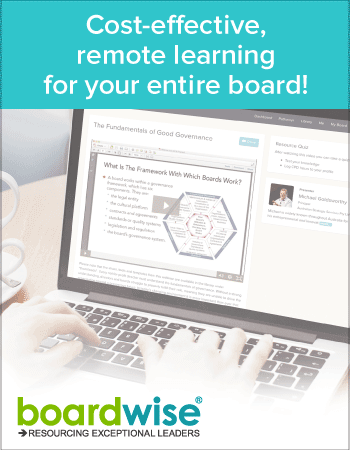organisational-development
Inviting Stakeholders to Have a Say in Decision-Making
Published: July 13, 2015
Read Time: 6 minutes

Power to the People: How NFP boards can produce better outcomes by inviting stakeholders to have a say in their decision-making.
From collaborative consumption to collective impact, we are increasingly recognising that we have a better chance of surviving the future if we pool our talents to collaborate, rather than using them to compete against one another. It is this shift in thinking that prompted Harvard Business Review blogger, Ben Hecht, to declare that ‘Collaboration is the new competition’ in early 20131.
However, if we want our stakeholders to collaborate with us, we first have to let them in. We have to make space for them to participate in our meetings and forums, we need to invite their input into our strategies and plans and we have to join in partnership with them to implement solutions. Call it what you will – engagement, consultation, dialogue, deliberation – it all comes down to reaching out to people both within and outside of our organisations and inviting them to participate. In member-based professional associations, it’s about giving individual members a voice. In peak bodies and federated organisations, it’s about ensuring that each organisation has a place at the table. And, in faith-based and charitable groups, it’s about reaching out to supporters and donors.
Governments have long understood the need to consult the people who are affected by the decisions they take. Over the years a cadre of professionals has grown up alongside government as it has engaged, consulted and deliberated with taxpayers. The professional body for these public participation professionals is the International Association of Public Participation. The IAP2, as they are known, has developed a spectrum of public participation2. The spectrum presents five levels, each of which promises more stakeholder involvement and hence more impact:
- Inform – We would all recognise this as traditional communication. It includes communications tools such as fact sheets, websites and displays. The promise to stakeholders is simply, ‘We will keep you informed.’
- Consult – Most opinion research activities would fall into this stage: surveys, focus groups, and town hall meetings. However, in addition to keeping stakeholders informed the promise extends to ‘listen and acknowledge concerns and provide feedback on how the input provided influenced the decision’.
- Involve – This level includes more in-depth work through events such as workshops or deliberative forums. In addition to keeping stakeholders informed and letting them know how their views shaped the decision, the organisation promises to ensure stakeholder ‘concerns are directly reflected in the alternatives developed’.
- Collaborate – This level marks a higher order of partnership between stakeholders and an NFP. Through forums such as service design workshops and participatory decision-making forums, stakeholders work hand in hand with NFP volunteers and staff to ‘give direct advice and innovate in formulating solutions’ that will be incorporated into the plan or project to the ‘maximum extent possible’.
- Empower – This level is called empower because the not-for-profit (NFP) commits in advance to ‘implement’ the design developed by the stakeholder/NFP partnership. Deliberative forums such as Citizen Juries or the use of ballots can determine future directions based on stakeholder consensus.
The not-for-profit sector is full of opportunity for enhanced collaboration and NFP leaders can use IAP2’s spectrum to inform their engagement strategies. Peak bodies and federated associations can invite their state counterparts to join them in strategic planning so that they can take a sector-wide view of their common challenges. Health charities and NGOs can bring multi-disciplinary teams together to co-design new service delivery models to better serve their collective client base. Social welfare and justice groups can band together to address wicked social problems for the benefit of us all. If we reach out beyond the confines of our organisations and join with others we can achieve more than our mission alone.
Unfortunately, many Australian not-for-profits still struggle to engage their stakeholders beyond traditional one-way communications. We need to find the courage and develop the capabilities to better engage our stakeholders. However, there is encouraging news. There is mounting evidence that both individuals and organisations are becoming braver in tackling the challenges ahead. Social media has emboldened us all like never before. As individuals we are becoming so accustomed to having our say that we have come to expect it…and, not just online. NFP leaders are gaining more courage too. They are learning that while it is far more challenging to engage and persuade than it is to command and control, it is more rewarding too. It’s a brave new world.
If we are able to find the mettle to confront our insecurities and openly engage with our stakeholders, we can capture many benefits:
- More active engagement of internal and external stakeholders
‘The sage on the stage’ no longer cuts it when it comes to engaging conference delegates. People know that information is everywhere so there’s no need to attend a meeting or conference if it just composed of a series of presentations. Face-to-face meetings are increasingly about the audience having its say too. If you are not engaging your stakeholders, they will find someone who will. However, those who do should expect to be rewarded with higher levels of motivation and loyalty among staff, volunteers and external partners alike. - Better solutions
When we invite representatives from every level and corner of the stakeholder community to participate in decision-making processes, we are engaging in Whole-System thinking . Essentially, Whole-System thinkers believe that it is the people who live with the issues and the people who implement the solutions who are best placed to innovate. According to Professor Lyn Carson of the University of Sydney, ‘diversity trumps ability every time and don’t discount the power of the beginner’s mind’. Novices are able to see solutions where others with more experience might not.3 - More sustainable solutions
Even though a plan may be hatched or a proposal developed in a special-purpose stakeholder forum, it usually needs to pass through the governance system of the NFP before it can be funded and implemented. However, when a board knows that the entire stakeholder community has been consulted, involved and engaged in joint collaboration, it can approve and fund these proposals knowing that it has deep and broad support. The Japanese recognised this truth years ago when they enshrined the process of Nemawashi into their decision-making. Originally a term plucked from the lexicon of Japanese gardening, it means ‘tending to the roots’, quietly laying the foundation for a proposed change or project by talking to the people concerned and gathering support and feedback before any formal steps are taken.4
Sharing power with the people might be scary but it can also yield better relationships inside and outside your organisation, enhanced trust with your partners and ultimately, an opportunity to make a bigger difference than if you were acting alone.
This article was originally published in the Better Boards Conference Magazine 2014.
-
Hecht, Ben. HBR Blog Network. 10 January 2013. 20 May 2014.. ↩︎
-
International Association for Public Participation. “www.iap2.org.au.” 2004. 20 May 2014. ↩︎
-
Block, Peter. Flawless Consulting: A guide to getting your experience used. San Francisco: Pfeiffer, 2011. ↩︎
-
Sakai, Ken. “The Secret to Japanese Consensus Building: ‘Nemawashi’.” 3 April 2012. Japan-US Business Blog: Nippon Notes. 20 May 2014. ↩︎
Share this Article
Recommended Reading
Recommended Viewing
Author
-
Managing Director
Think: Insight & Advice
- About
-
Randall Pearce ACC, Associate Certified Coach.
Randall Pearce is one of Australia’s foremost experts in not-for-profit management. As the managing director of THINK: Insight & Advice, Randall has worked to maximise the performance and governance of some of the nation’s top peak bodies, associations, NGOs and government agencies. Prior to founding THINK in 2007, he served as the CEO of a large professional association. As a consultant, Randall works exclusively with boards and has served as the chair of a charity himself, giving him direct insights into the unique challenges faced by board chairs. He has presented at several Better Boards conferences, facilitated webinars, and contributed to the Better Boards newsletter.
Found this article useful or informative?
Join 5,000+ not-for-profit & for-purpose directors receiving the latest insights on governance and leadership.
Receive a free e-book on improving your board decisions when you subscribe.
Unsubscribe anytime. We care about your privacy - read our Privacy Policy .







